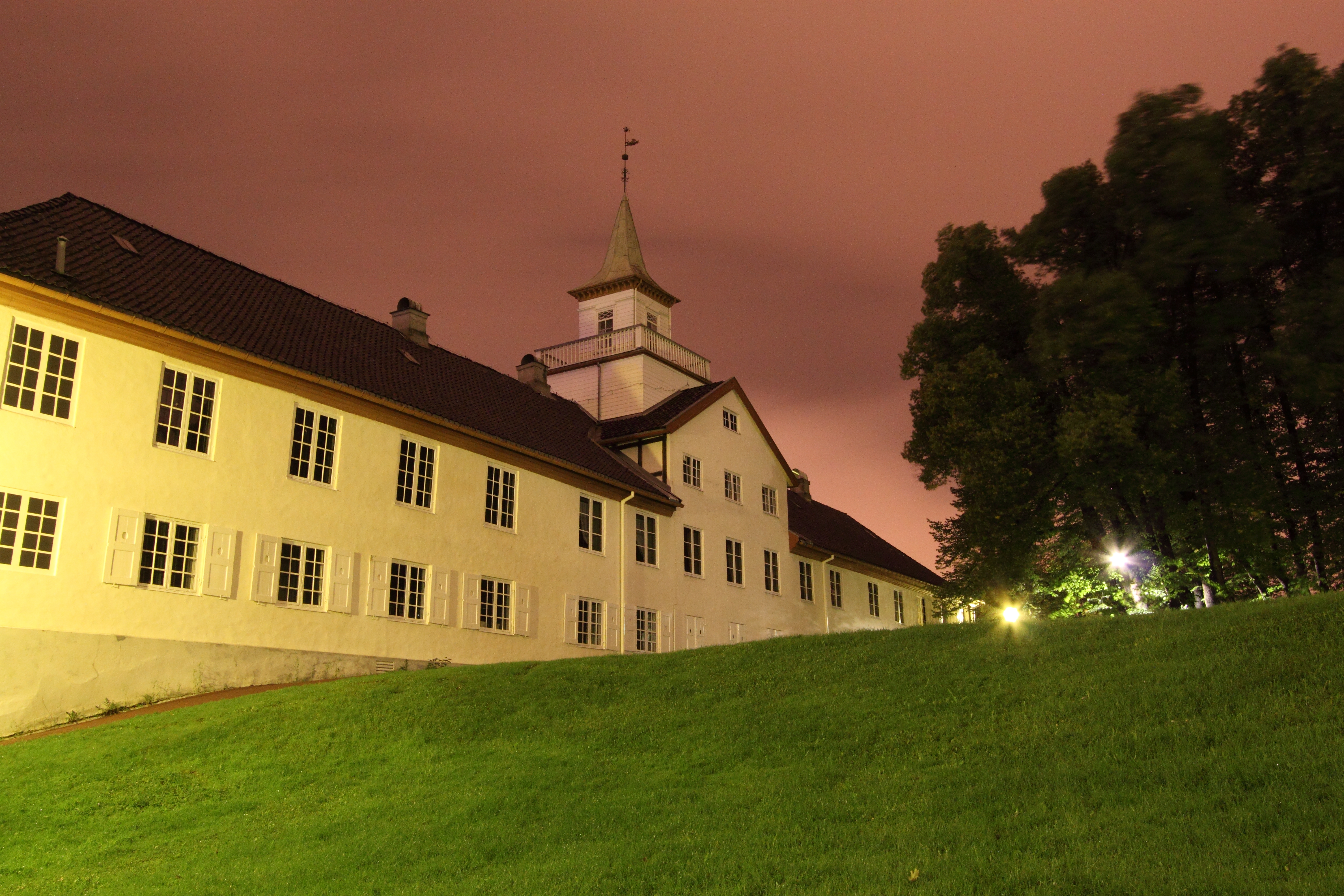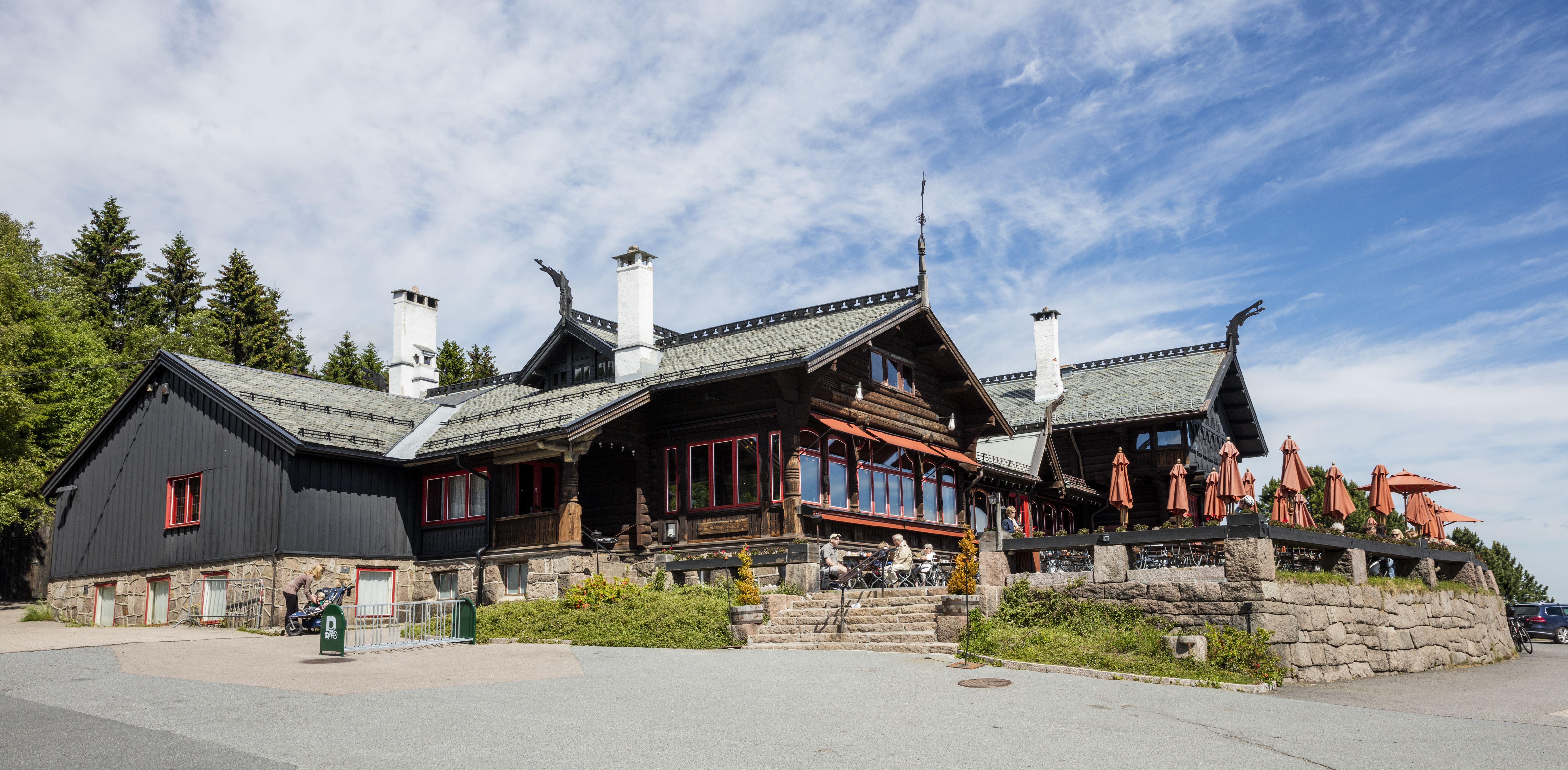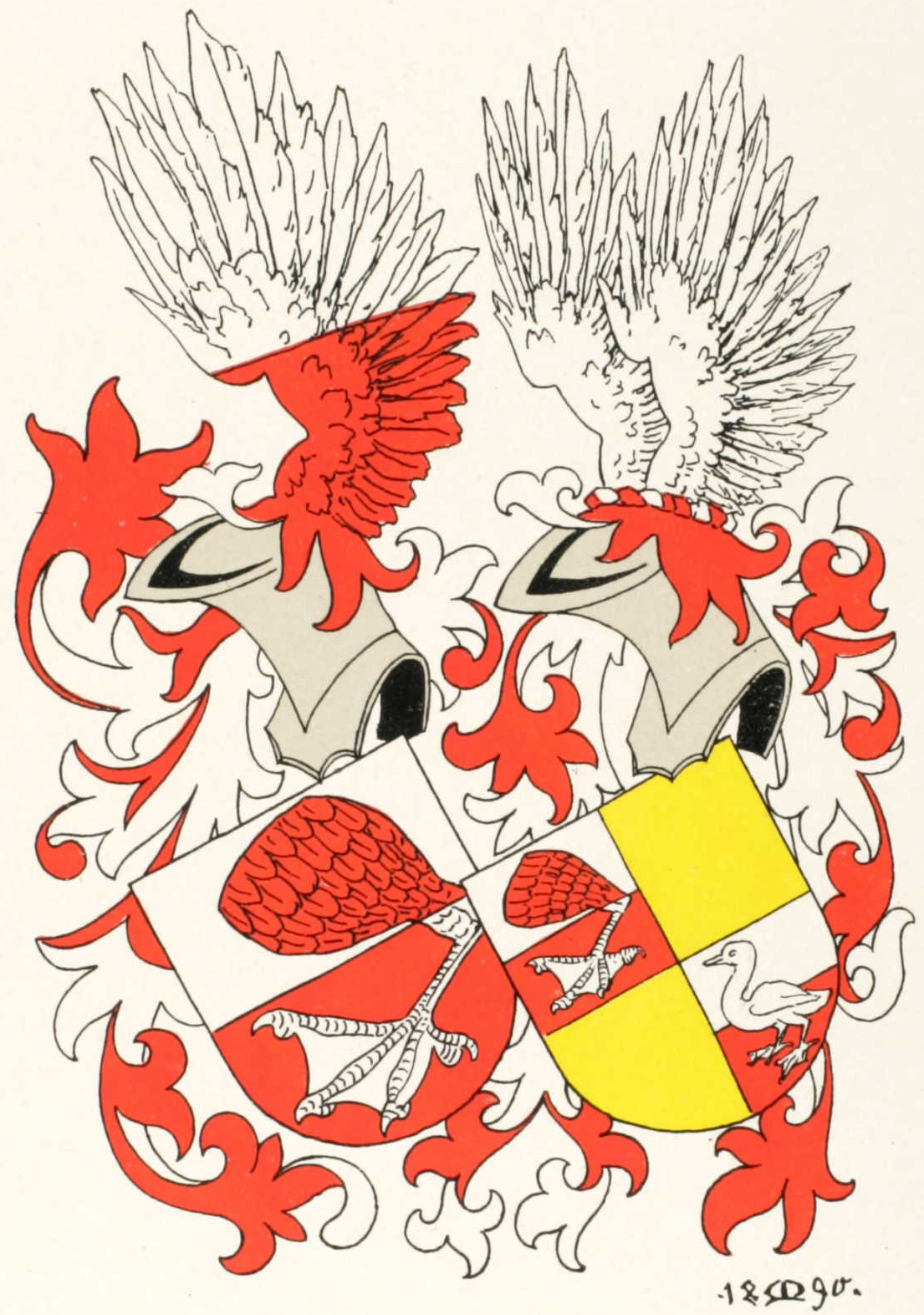|
Henriette Pauss
Anna Henriette "Jette" Pauss (2 April 1841, at Frogner Manor in Aker (now Frogner, Oslo) – 4 April 1918, in Christiania), née Anna Henriette Wegner, was a Norwegian teacher, editor and humanitarian and missionary leader. With her husband Bernhard Pauss, she was one of the early leaders of the Norwegian Santal Mission, a humanitarian and missionary organisation that was active among the Santhal people of India. In 1907, she succeeded her husband as editor of the organisation's journal '' Santalen'' ("The Santal") and also became a member of its executive board, as the first woman elected to the national leadership of a Norwegian missionary organization. She was a teacher at the private Nissen's Girls' School, which was owned by her husband, and was the school's headmistress from 1885 to 1909. She was also a member of the board of directors of the School for Young Ladies in Christian Augusts Gade. Together with e.g. Moltke Moe, Erik Werenskiold, Gina Krog, Axel Johannessen, Er ... [...More Info...] [...Related Items...] OR: [Wikipedia] [Google] [Baidu] |
Oslo Museum
Oslo Museum ( no, Oslo museum) is a museum dedicated to the history and culture of Oslo, Norway. The museum is headquartered at Frogner Manor in Frogner Park, together with two of its departments; Oslo City Museum and Theatre Museum. History It was formed in 2006 by the merger of Oslo City Museum (''Oslo Bymuseum''), the Intercultural Museum (''Interkulturelt museum'') and the Theatre Museum (''Teatermuseet''), which are now departments within Oslo Museum. A fourth museum, the Labour Museum (''Arbeidermuseet''), joined in 2013. Oslo City Museum, Intercultural Museum, and Theatre Museum joined forces to create the new museum as a consequence of the State Museum reform. The new museum foundation functioned under the working title "Capital Museum", but from December 2006, it adopted the name "Oslo Museum". Departments at Oslo Museum Oslo City Museum The Oslo City Museum was first founded in 1905 as the association ''Foreningen Det gamle Christiania''. Initiator and curator ... [...More Info...] [...Related Items...] OR: [Wikipedia] [Google] [Baidu] |
Axel Johannessen
Axel Theodor Johannessen (29 May 1849 – 2 March 1926) was a Norwegian physician, pediatrician, professor at University of Oslo and senior doctor at Rikshospitalet Hospital in Oslo. Background He was born in Christiania (now Oslo), Norway. He was the son of Christen Johannessen (1814-1903) and Christine Oline Thorkildsen (1820-1915). He graduated artium in 1866. He was a student at the Royal Frederick University (now University of Oslo) and became a cand.med. in 1875. He followed with a study trip to Germany, Austria and Italy to study infectious diseases based on the new subject of bacteriology. Career In 1876 Johannessen moved to Bærum, where he worked as a doctor at Bærums Verk. During 1885–1886, Johannessen studied the occurrence of struma and two years later undertook a trip to hospitals in Germany, the Netherlands, Belgium, France and Denmark to study the treatment of tuberculosis. In 1891 Johannessen was appointed lecturer in childhood diseases at the Univer ... [...More Info...] [...Related Items...] OR: [Wikipedia] [Google] [Baidu] |
Karen Wedel-Jarlsberg
Christiane Andrea "Karen" Wedel-Jarlsberg (née Anker; 2 November 1789 in Christiania (now Oslo) – 19 June 1849 on Bogstad gård), was a Norwegian countess and lady in waiting. Life Karen Wedel-Jarlsberg was the only surviving child and heir of landowner and prime minister Peder Anker and Anna Elisabeth Cold (1749–1803). She was one of the richest heirs in Norway. She married count Herman Wedel-Jarlsberg 19 May 1807 on Bogstad. Her spouse was one of the influential Norwegians who supported a union between Norway and Sweden. Court career In 1814, Norway and Sweden were united and shared the same royal house. During the visits of the royal family in Norway, it was to have a separate Norwegian court, who met them at the border and served them during their stay in Norway. Karen Wedel-Jarlsberg was given the task to be the head lady in waiting of the first Norwegian court since the Middle Ages. From 1817 onward, she served as principal lady-in-waiting to three Swedish-Norwegian ... [...More Info...] [...Related Items...] OR: [Wikipedia] [Google] [Baidu] |
Frognerseteren
Frognerseteren is a neighborhood of Oslo, Norway, located within Nordmarka. It is a popular starting point for recreational hiking and skiing in Oslo. Frognerseteren Station is the terminal station of the Holmenkollen Line of the Oslo Metro. Frognerseteren Restaurant () and conference facilities is one of the best examples of architectural style Dragestil in Oslo. www.visitnorway.com ''Frognerseteren'' means the ''seter'' ("mountain dairy farm", roughly comparable to ) of Frogner (Manor). Frognerseteren with part ... [...More Info...] [...Related Items...] OR: [Wikipedia] [Google] [Baidu] |
Hafslund
Hafslund is a borough located east of the city centre in the city of Sarpsborg, Norway, Before 1992, Hafslund was a part of Skjeberg municipality. The name Hafslund, which is composed of ''Hafr'', the Old Norse name for husband and ''lundr'' meaning grove. There has been a permanent settlement at Hafslund for over 5000 years. Hafslund Manor Hafslund Manor (''Hafslund Hovedgård'') is an estate located just outside Hafslund. At various times, it was owned by the Østby family and, later, the industrialist and timber merchant Benjamin Wegner and by Maren Juel who regarded during her lifetime as the wealthiest woman in Norway. The property is now approximately 6,000 acres, of which approximately a quarter of the acreage is forested. About 2,000 acres leased for residential and industrial land. The first public record of Hafslund dates to 1344, at which time the farm was crown property. Hafslund Manor dates from 1761. The manor house is located at the old Sandesund ferry site. It ... [...More Info...] [...Related Items...] OR: [Wikipedia] [Google] [Baidu] |
Abel Seyler
Abel Seyler (23 August 1730, Liestal – 25 April 1800, Rellingen) was a Swiss-born theatre director and former merchant banker, who was regarded as one of the great theatre principals of 18th century Europe. He played a pivotal role in the development of German theatre and was considered "the leading patron of German theatre" in his lifetime.Wilhelm Kosch, "Seyler, Abel", in '' Dictionary of German Biography'', eds. Walther Killy and Rudolf Vierhaus, Vol. 9, Walter de Gruyter, 2005, , p. 308 He supported the development of new works and experimental productions, helping to establish Hamburg as a center of theatrical innovation and to establish a publicly-funded theater system in Germany. He is credited with introducing Shakespeare to a German language audience, and with promoting the concept of a national theatre in the tradition of Ludvig Holberg, the ''Sturm und Drang'' playwrights, and serious German opera. Already in his lifetime, he was described as "one of German art's most ... [...More Info...] [...Related Items...] OR: [Wikipedia] [Google] [Baidu] |
Berenberg Bank
Joh. Berenberg, Gossler & Co. KG, commonly known as Berenberg Bank and also branded as simply Berenberg, is a multinational full-service investment bank based in Hamburg, Germany. It was founded by the Flemish Berenberg family in 1590 () and is the world's oldest merchant bank. Its owners, the Berenberg/ Gossler family, belonged to the ruling elite of Hanseatic merchants of the city-republic of Hamburg and several family members served in the city-state's government from 1735. Like many other merchant bankers, the Berenbergs were originally cloth merchants. The bank's name refers to Johann Berenberg, his son-in-law Johann Hinrich Gossler and the latter's son-in-law L.E. Seyler, and has remained unchanged since 1791. The bank has operated continuously since 1590 and is still part-owned by members of the Berenberg-Gossler family. Berenberg Bank is active in investment banking, particularly pan-European equity research, brokerage and capital markets transactions, in additio ... [...More Info...] [...Related Items...] OR: [Wikipedia] [Google] [Baidu] |
Anna Henriette Gossler
Anna Henriette Gossler (7 November 1771 – 2 August 1836) was a Hamburg banker, heiress and socialite. Biography Gossler was born in Hamburg. Anna Henriette Gossler, who went by the name of Henriette, was a member of the Hanseatic Berenberg/ Gossler banking family, arguably the most prominent family of the then independent city-state of Hamburg alongside the related Amsinck family. She was the oldest daughter of the bankers Johann Hinrich Gossler and Elisabeth Berenberg, owners of Berenberg Bank, which had been founded by her family in 1590. On 20 May 1788, she married her father's employee Ludwig Erdwin Seyler, who immediately was made a partner in the bank and remained so until his death nearly half a century later. After the death of her father in 1790 her husband became head of the company. Particularly in the years around the Napoleonic Wars she and her husband played prominent roles in Hamburg high society and politics, and Berenberg Bank was headquartered in their priva ... [...More Info...] [...Related Items...] OR: [Wikipedia] [Google] [Baidu] |
Ludwig Erdwin Seyler
Ludwig Erdwin Seyler (15 May 1758 – 26 October 1836; often known as ''L.E. Seyler'') was a German banker, merchant and politician. He was by marriage a member of the Hanseaten (class), Hanseatic Berenberg family, Berenberg banking dynasty, and was a partner in the Hamburg firm Berenberg Bank, Joh. Berenberg, Gossler & Co. (Berenberg Bank) for 48 years (1788–1836), for 46 years as the company's senior partner. The "Co." part of the company name refers to him. Seyler was one of the first merchants and bankers from modern Germany to establish trade relations with the United States and East Asia. He served as a member of the government of Hamburg during the Napoleonic Wars and later as the President of the Hamburg Chamber of Commerce, Commercial Deputation, one of the city-state's main political bodies, and as a member of the Hamburg Parliament. Ludwig Seyler was a son of the Swiss-born theatre director Abel Seyler and a son-in-law of the bankers Johann Hinrich Gossler and Elisabeth ... [...More Info...] [...Related Items...] OR: [Wikipedia] [Google] [Baidu] |
Henriette Wegner
Henriette Wegner (born 1 October 1805 in Hamburg, died 25 November 1875 in Christiania), née Henriette Seyler, was a Norwegian businesswoman and philanthropist, a member of the Hanseatic Berenberg banking dynasty of Hamburg and the wife of the Norwegian industrialist Benjamin Wegner. She was briefly a co-owner of Berenberg Bank, and was also noted for her work for the homeless in Norway. During her life she was a citizen of the city-republic of Hamburg, of France during the Napoleonic Wars, and finally of Norway from 1824. Childhood in Hamburg Born Henriette Seyler in the city-republic of Hamburg, she was the youngest daughter of the banker L.E. Seyler and Anna Henriette Gossler, and a granddaughter of the Swiss-born theatre director Abel Seyler and of the Hamburg bankers Johann Hinrich Gossler and Elisabeth Berenberg, whose Belgian-origined family had founded Berenberg Bank in 1590. Her father L.E. Seyler was a co-owner of Berenberg Bank for 48 years as well as President of ... [...More Info...] [...Related Items...] OR: [Wikipedia] [Google] [Baidu] |
Benjamin Wegner
Jacob Benjamin Wegner (21 February 1795 – 9 June 1864) was a Norwegian business magnate, estate owner and timber merchant. Born in Königsberg, East Prussia, he moved to London in 1819 and to Berlin in 1820, where he established an independent business as an agent in the British timber and grain trade, as a close associate of the London firm Isaac Solly and Sons. In 1822, he relocated to Norway, after he had bought Blaafarveværket (The Blue-Colour Works) on behalf of a consortium led by the Berlin banker Wilhelm Christian Benecke. From 1822 to 1849, he was Director General and one of two owners of Blaafarveværket; the company was Norway's largest and most successful industrial enterprise in the first half of the 19th century and by far the world's largest producer of cobalt blue. He was also owner of Frogner Manor, the largest co-owner of the Hafslund estate, a co-owner of the Hassel Iron Works and a co-owner of the timber firm Juel, Wegner & Co. Most of his business act ... [...More Info...] [...Related Items...] OR: [Wikipedia] [Google] [Baidu] |
Aksel Arstal
Aksel Kristian Andersen Arstal (25 August 1855 – 28 November 1940) was a Norwegian theologian, schoolteacher and geographer. He was born in Christiania (Oslo) to city engineer Oluf Martin Andersen and Annette Fredrikke Sontum, and was a brother of pianist Hildur Andersen. He graduated as cand.theol. in 1876 from University of Oslo, worked as schoolteacher at various private schools, eventually as geography teacher at the Oslo Commerce School, and lectured in political geography at the university. His works on geography include ''Landomrids'' (1886), ''Geografi for Middelskolen'' (1899) and ''Norges økonomiske Geografi'' (1902). He edited ' (1902), a work on parents and children which had a large number of prominent contributors. Arstal edited the first edition of the encyclopedia ''Oslo byleksikon ''Oslo byleksikon'' ( en, Oslo City Encyclopaedia) is an encyclopaedia on Oslo, Norway's capital city. It has been published in five editions since 1938. The third, fourth ... [...More Info...] [...Related Items...] OR: [Wikipedia] [Google] [Baidu] |



.jpg)




.jpeg)
.jpeg)